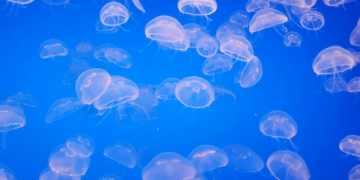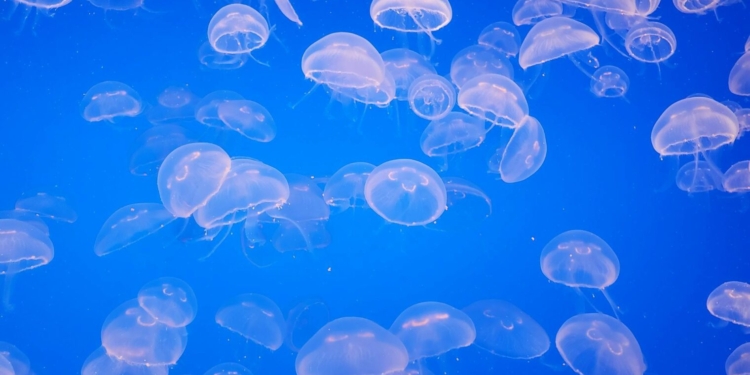
If you’ve ever visited an Israeli beach during jellyfish season and watched a swarm of graceful jellies float through the sea, you might think that they’ve found real inner peace, casually drifting wherever the whims of the ocean waves take them.
If that’s what you thought, though, you’re actually super wrong.
Turns out jellyfish are actively trying to get somewhere, they’re just really bad at it.
This news comes as the result of a new study from the University of Haifa’s Leon H. Charney School of Marine Sciences, which has revealed that jellyfish in the southeastern Mediterranean Sea possess unexpected navigational abilities.
The research, published in Current Biology, focused on aggregations of Rhopilema nomadica, the most common jellyfish species in the region.
Yoav Lehahn, the study’s editor from the department of marine geosciences, elaborated on the findings.
“Until now, it was assumed that jellyfish aggregations swim in a random manner, so that their direction is dictated solely by water currents. Thanks to innovative research methods, we discovered that along the coast of Israel, jellyfish swim toward the west, against the direction of the waves,” he said.

This discovery contradicts common understandings about jellyfish movement and could have implications for predicting their arrivals at coastal facilities such as power stations and desalination plants (two places where it would really stink to have a huge mass of jellyfish clogging up the works).
The research team collected data by a variety of means, including light aircraft surveys, drone photography and observations from research boats. These techniques enabled tracking of thousands of jellyfish, whose movement patterns were analyzed using mathematical models.
The study found that Rhopilema nomadica jellyfish swim collectively at blistering speeds of around 10 centimeters (0.33 foot) per second (which is actually about five times faster than a snail, so at least they’ve got that going for them). While swimming at this breakneck pace, the jellies consistently move westward against the waves.
Researchers think that this is probably an attempt to increase their chances of survival by decreasing their odds of washing up on shore and getting scooped into a child’s sandcastle bucket for prodding and experimentation.
However, the researchers note that swimming patterns may vary among different jellyfish species and maritime environments. In some cases, jellyfish might swim against currents rather than waves, or prefer to stay near the coast.
Despite these navigational abilities, jellyfish still end up on beaches. The scientists chalk this up to strong currents and waves overwhelming their swimming capabilities.
“The study advances our understanding of their movements, and in the future may allow us to predict when accumulations will arrive on coasts and when they will depart,” they concluded.
The research was conducted in collaboration with scientists from the Technion-Israel Institute of Technology, the Hebrew University of Jerusalem and Tel Aviv University.
Produced in association with ISRAEL21c


























 Continue with Google
Continue with Google